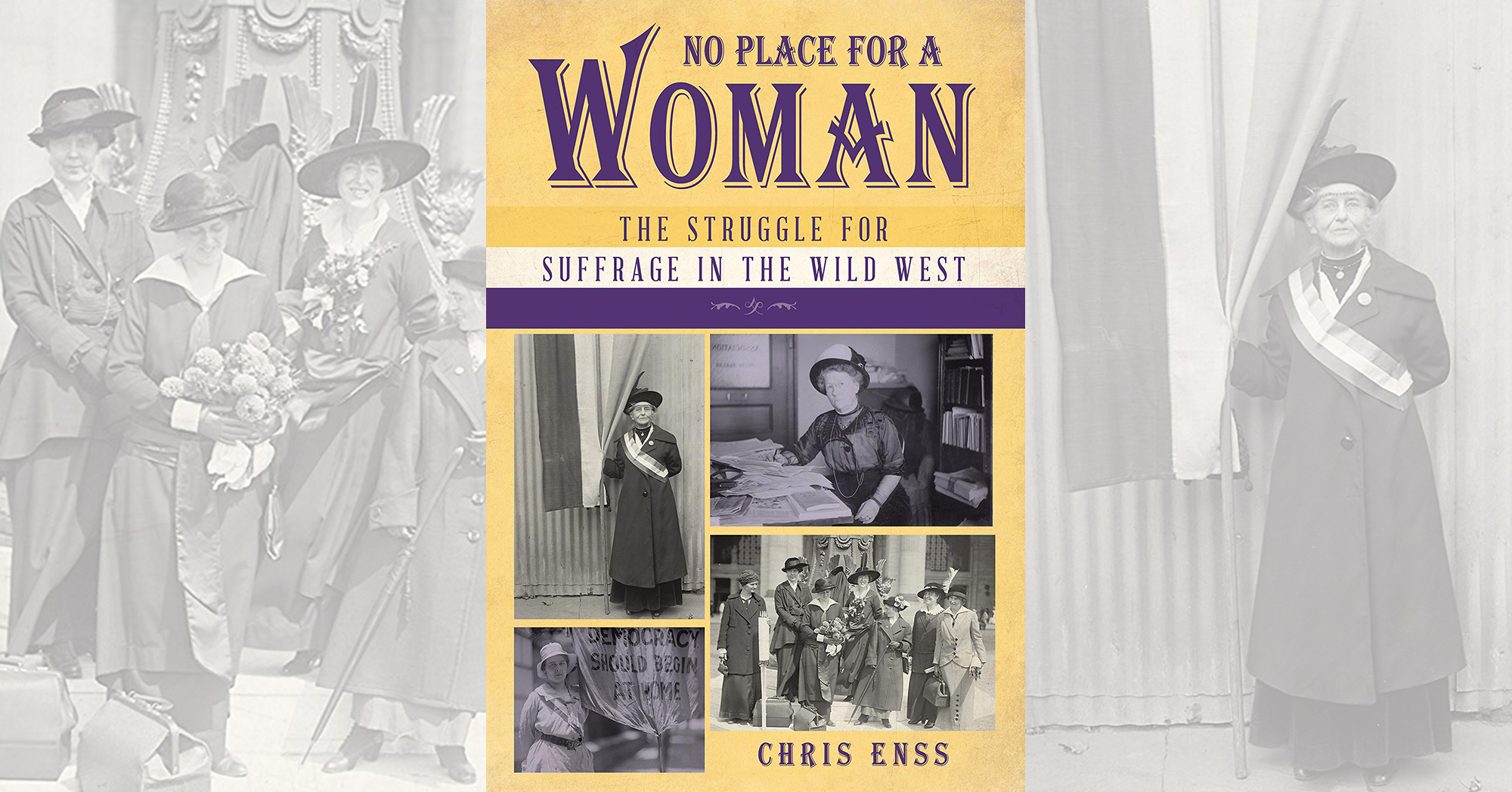No Place for a Woman: The Struggle for Suffrage in the Wild West, by Chris Enss, TwoDot, Helena, Mont., and Guilford, Conn., 2020, $26.95
A century has passed since the 19th Amendment guaranteed voting rights to women throughout the United States. It had taken a prolonged, determined effort to make that breakthrough, advancing and retreating in a series of fits and starts (women were among the “all free inhabitants” who could vote in New Jersey in 1790, only to see that right revoked in 1807). Among the many names with whom posterity is familiar are Elizabeth Cady Stanton, Susan B. Anthony, Lucy Stone and Carrie Chapman Catt, storming the male ramparts in New York and Washington. Some of the most significant progress, however, was made west of the Mississippi in the late 1890s as one Western state after another adopted women’s suffrage within its borders. In No Place for a Woman Chris Enss focuses on the West’s special contribution, state by state, toward the ultimate, belated realization of the Declaration of Independence’s ideal of all men (and women) being created equal.
From the days of the earliest pioneers the American frontier offered a promise of renewal and new possibilities, sought through shared dangers and hardships. The peculiar circumstances of the developing West encouraged the acceptance of women in an expanded array of professions and activities beyond the restraints of the kitchen—including politics. That included, most famously, the Women’s Christian Temperance Union, personified by the fervent Carrie Nation, whose religiously inspired social reforms were intermingled with a call for more political influence. Enss’ book covers a lot more ground than that, including the heroines who laid the groundwork across the Great Plains, not to mention the sympathetic “suffragents” who joined their cause.
In 1869 Wyoming Territory granted women full suffrage as part of its new territorial constitution. In 1870 Utah Territory granted women’s suffrage (that lasted until 1887). In 1872 Dakota Territory a suffrage bill before the Legislature lost by just one vote. In 1883 women in Washington Territory were granted full suffrage, but the territorial Supreme Court overturned the law four years later. When Wyoming became a state in 1890, its women’s suffrage provisions stayed in place. Eleven Western states adopted women’s suffrage before World War I, including Montana and Nevada in 1914. Two years later Montana’s Jeannette Rankin was elected the first woman to sit in the U.S. House of Representatives.
One caveat regarding the editing, though: A number of sidebars are inserted without any shading to differentiate them from the main text, so be ready to find the continuity of the main narrative change without warning. Once you get the hang of that, however, No Place for a Woman might offer a new perspective on an oft-overlooked facet of the Spirit of the West and its influence on the nation. This 183-page book by the prolific Enss certainly came out in timely fashion, as 2020 saw women and the majority of men celebrating the 100th anniversary of the 19th Amendment.
—Jon Guttman
This post contains affiliate links. If you buy something through our site, we might earn a commission.





